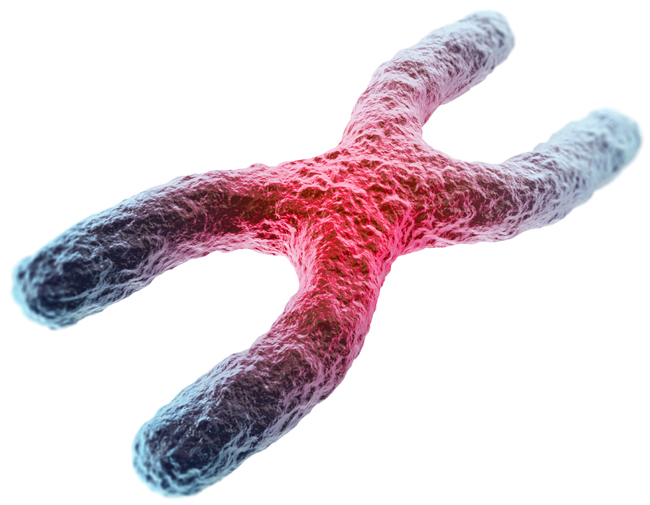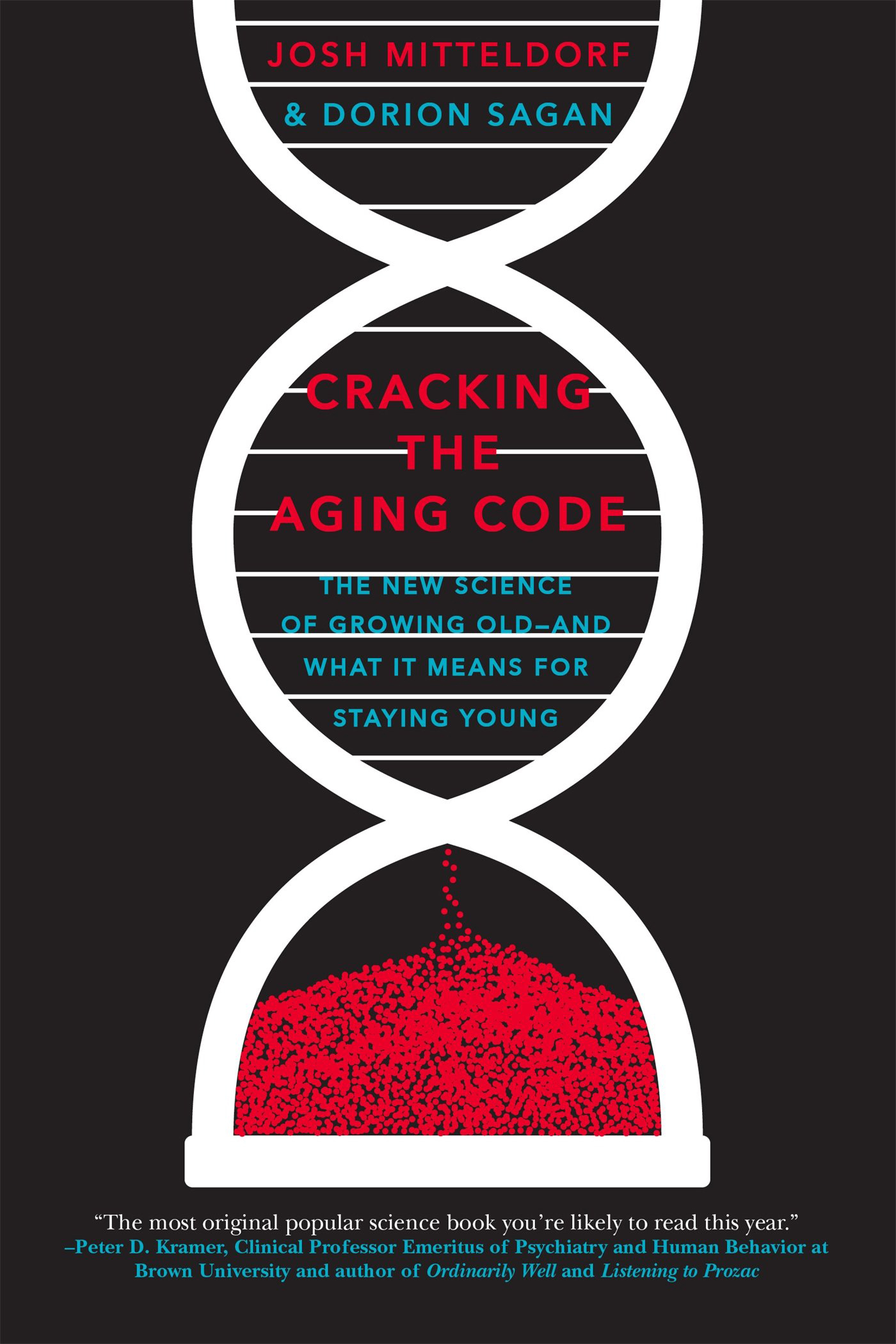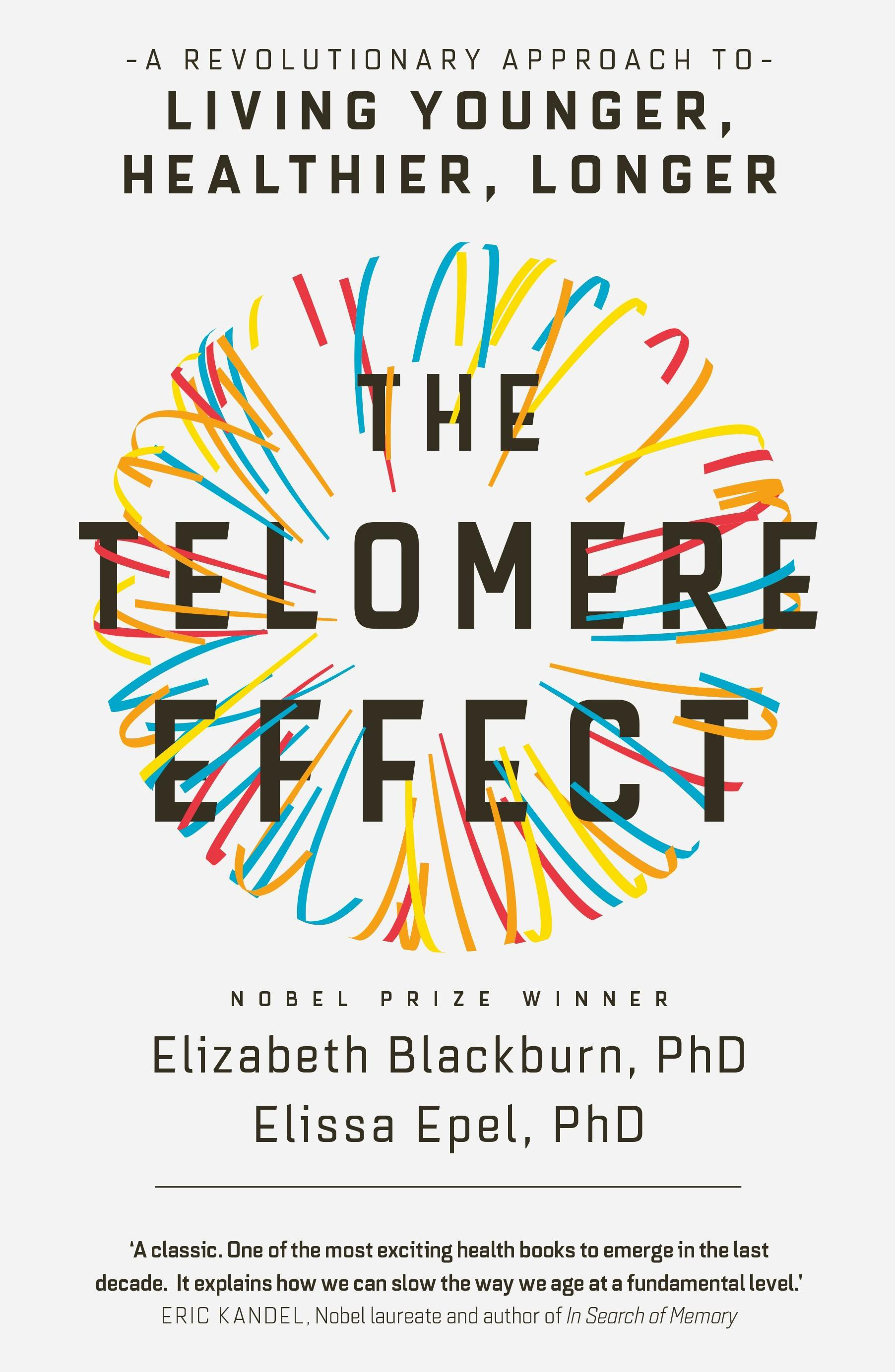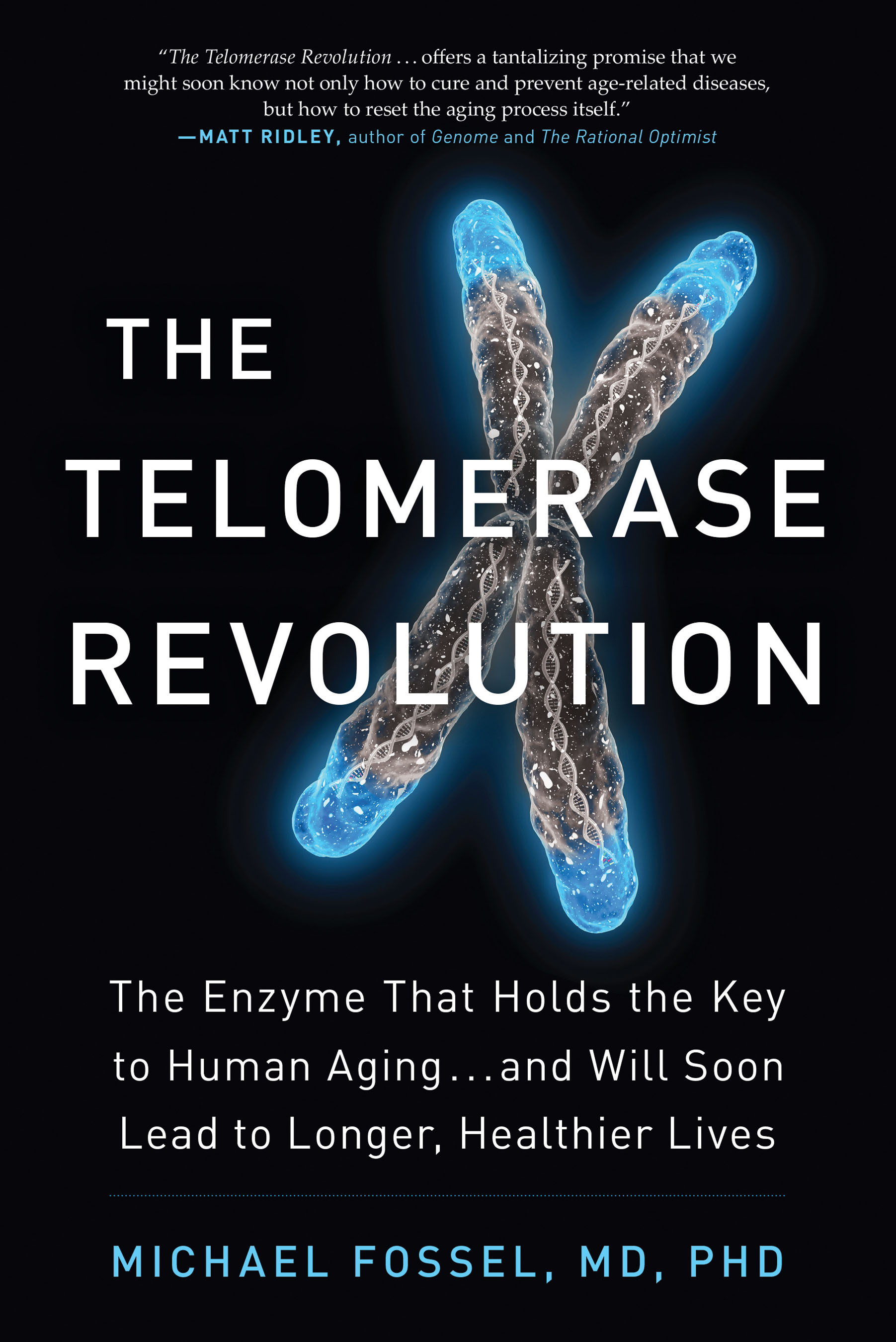Your Cells Are Killing You
Molecular scientists are unlocking cellular timing systems that could allow us to live longer, healthier lives—reminiscent of life spans reaching hundreds of years as reported in the book of Genesis. But would more time help us overcome the most debilitating conditions we face?
Cracking the Aging Code: The New Science of Growing Old—and What It Means for Staying Young
Josh Mitteldorf and Dorion Sagan. 2016. Macmillan, Flatiron Books, New York. 336 pages.
The Telomere Effect: A Revolutionary Approach to Living Younger, Healthier, Longer
Elizabeth Blackburn and Elissa Epel. 2017. Hachette Book Group, Grand Central Publishing, New York. 416 pages.
The Telomerase Revolution: The Enzyme That Holds the Key to Human Aging . . . and Will Soon Lead to Longer, Healthier Lives
Michael Fossel. 2015. BenBella Books, Dallas, Texas. 256 pages.
No one wants to die. Though it’s inevitable, we certainly want to put it off for as long as possible. But long life has its own hazards. It isn’t age we fear; it’s aging and degeneration that give us a twinge of panic. Mr. Death’s scythe worries us less than Father Time’s hourglass. He’s the monkey on our back whispering “Frail,” “Hobbled,” “Demented,” “Can’t.”
Although immortality is not in the cards, can degeneration and the terrors of aging be lessened or even eliminated? What keeps our bodies youthful in youth, and then stops? And why does it stop? Do our bodies forget how to be young? Could we help them remember?
Might the solution to the problems of aging be within us? Maybe our bodies once knew how to stay youthful. In the pages of Genesis we see people living hundreds of years. Is that even physically possible? Presumably Adam didn’t spend his last 850 years pushing a walker through the dim halls of Sunset Acres (see Genesis 5:5).
Such a renewed capacity for long life seems outrageous. Yet as Harvard-trained medical doctor Ed Park puts it, we may now be able to get “back to the Garden” where “God will allow for a new covenant by resetting our biological clocks.”
On the practical side in the world today, imagine the savings in medical care if the degenerative diseases of aging—Alzheimer’s, Parkinson’s, osteoporosis, atherosclerosis and arthritis, to name a few—could be eliminated. As Michael Fossel suggests, the value of the accrued wisdom of human experience would no longer be lost. “The old will be repositories of vast knowledge that continues to be invested in the future,” he says. “We’d no longer bury this store of knowledge, but actively use it to improve our economies and our societies.”
Fossel’s Telomerase Revolution, Elizabeth Blackburn and Elissa Epel’s The Telomere Effect, and Josh Mitteldorf and Dorion Sagan’s Cracking the Aging Code provide a fascinating collective read into how we are built, how we fail and, as their titles suggest, how we could make wiser and more-informed choices in our pursuit of long, healthy lives. Blackburn and Epel note, “The foundation for a new understanding of health in our society is not about ‘me’ but ‘we.’”
And there are more of us to consider all the time. Although average life span varies from country to country, globally it’s about 70 years today—roughly double what it was in 1900. Of the 7.5 billion people on earth, about 13 percent are over the age of 60. By 2050, that number is expected to rise to around 22 percent. According to at least one study, by 2030 women in some industrialized countries may achieve an average life span of 90 years and men more than 80.
Despite this progress, which simply reflects a better understanding of nature and adapting its ways to our ways through sanitation, antibiotics and vaccines, the cell’s clock keeps on ticking and sets the pace of aging, or senescence. Leonard Hayflick, a pioneer in the study of cellular aging, told Vision in 2009: “The key question to ask is, why is an old cell more vulnerable to pathology than a young cell? . . . The physician’s mantra is that ‘the greatest risk factor for age-associated diseases is aging.’ So why are we not studying the fundamental biology of aging?”
An Ecological Connection?
Current theories of aging relate to wear and tear, metabolism, hormones, free radicals, nutrition, environmental toxins and (or in conjunction with) genetic mutations. All focus on aging as a mistake.
In Cracking the Aging Code, Mitteldorf and Sagan suggest that aging happens with purpose. “The damage that we suffer because of the isolation created by modern Western cultures, the chemical pollutants and the packaged diet, the imposed schedules that override our psychological needs and our biorhythms—all these are very real and harmful,” they agree. “But they have little to do with aging.”
They argue instead that aging and death are innate phenomena that keep species’ populations in balance. For instance, if predators lived longer, populations would rise and their prey would be depleted. This would lead to ecosystem collapse—exactly what nature is trying to avoid. In their view, the most fundamental reason for aging and death is to forestall overpopulation and the destruction of the greater environment. Living things have evolved with expiration dates for the good of the whole, not the individual.
This thesis implies a kind of ecological master plan tucked away in natural selection. “Natural selection must adjust the fertility and the life span to create a net speed of reproduction that is matched to the ecosystem—not too high or too low,” they write. “Not just groups, but whole ecosystems are adapted for homeostasis,” Mitteldorf says.
This is not mainstream evolutionary theory. But that’s okay with Mitteldorf, a theoretical mathematician with interests ranging from astronomy to evolution. He isn’t in the employ of a university, which he believes gives him fresh eyes to see beyond traditional biological theory. As he says to his reader, “I am going over the heads of the experts to appeal to your good sense.”
How might Mitteldorf’s Demographic Theory of Aging play out? Paradoxically, he says, an easy life is a short life, proving that “life span must be evolutionarily programmed to be shorter and the body less strong when life is easy.” On the other hand, in stressed situations, survival is enhanced by slower aging.
“When many individuals are already dying of starvation, death from aging takes a backseat. But when there is plenty to eat, death from old age takes its largest toll.”
Mitteldorf suggests that one way our bodies recognize our food level is through insulin. When our sugar intake is high, insulin levels rise. This tells the body “that there is plenty of food around, so it’s a good time to reproduce and die.” Conversely, “low insulin is the body’s signal that food is scarce; it is a bad time to reproduce, but the right time to slow down aging so that the body will be alive and youthful, ready for reproduction when the famine is over.”
This is an interesting yet disturbing hypothesis. It seems wrong, then it seems right, then it seems wrong again. The authors’ major proposition is that nature is not trying its best to give us ever longer, healthier lives; just the opposite. That’s okay, though, because we will do that for ourselves, but we should select our strategies wisely. A third of the text is devoted to living healthier and what a longer life would mean: “In the best scenarios, we will become a race of sages.”
Dorion Sagan, son of biologist Lynn Margulis and astronomer Carl Sagan, is Mitteldorf’s cowriter. Sagan seems born to write about the controversies of ecological balance. His mother was an early pioneer in the study of symbiosis—cooperative relationships between species. In his introductory chapter, Sagan notes that aging “protects and invigorates communities, which, come to think of it, are integral parts of our species’ survival.”
Because the so-called wear-and-tear theory of aging is incorrect, they say, “we don’t have to fix everything that goes wrong if we can only trick the body into thinking it is younger.” In fact, some stress—fasting, interval exercise, and adding an anti-inflammatory aspirin now and then—might be the best practice, they suggest.
As for the cellular switches that may unlock longer lives, “telomere length itself is known to have an influence on the expression of many genes, so telomeres are logically a part of the epigenetic state.” Mitteldorf’s guess “is that the unifying concept of the epigenetic clock is our best guiding paradigm for research in antiaging medicine.”

Our chromosomes come in various sizes; but they all share certain structural commonalities, including a telomere (shown here in blue) at the end of each arm.
The Telomere
Understanding how genetic systems operate and applying that understanding to aging is the realm of The Telomere Effect and The Telomerase Revolution.
Telomeres are the sections of DNA code found at the ends of each of our 23 pairs of chromosomes. When cells divide and their DNA is copied, a portion of the telomere is not copied and is cut away. After a number of replications and resulting shortening of the telomere, the cell senesces and dies. In this way the telomere acts as a kind of cellular clock.
Blackburn and Epel’s The Telomere Effect aims to “put the lessons from telomere research into the full story, as it is unfolding today, in language for the general reader.” Like Mitteldorf and Sagan, they don’t accept the wear-and-tear argument. Rather, the health of the telomere signals the health of the cell and in turn the health of the body.
“Aging need not be, as thought for so long, a one-way slippery slope toward infirmity and decay. We all will get older, but how we age is very much dependent on our cellular health.”
Not everyone is quite so head-over-heels about telomeres. Howard Friedman, professor of psychology at the University of California–Riverside, told Vision, “Yes, there is good evidence that telomere length is correlated with health and longevity. But these are correlations. The really interesting question is the causal one; that is, what can we do (or avoid doing) to stay healthy?”
Friedman, along with Leslie Martin, professor of public health at Loma Linda University, has summarized the findings of a longevity study that followed 1,500 people from childhood to death, beginning in 1921. The Longevity Project (2011) highlights their findings.
“As we describe in our studies,” Friedman continued, “the largest known influences are staying physically active, staying involved in something meaningful, maintaining good relationships with healthy friends or spouses, and cultivating a responsible, conscientious personality.”
Those influences are also front-and-center to Blackburn, president of the Salk Institute in La Jolla, California, and Epel, director of the Aging, Metabolism, and Emotions Center at the University of California–San Francisco. The difference is that they have connected the influence of these habits back to cellular health and longevity. They call telomeres “the canaries in our cells.” While telomeres don’t make us active, mindful or contented, they are affected by our mental and physical actions: “Your telomeres, it turns out, are listening to you. . . . The way you live can, in effect, tell your telomeres to speed up the process of cellular aging. . . . One of the keys to a long healthspan is simply doing your part to foster healthy cell renewal.”
The Telomere Effect is not about tonics, hormones or supplements. It’s an enthusiastic across-the-table conversation with the reader: Will you choose the good path to healthy aging, or will you “pull on [your] sweatpants, sit back in the recliner, and watch television until disease takes over?” Will you “form a clear, positive picture of how you’d like to age” and “imagine that it is possible to be old, healthy and energetically engaged with life”? If you will choose engagement, then “you suddenly have a goal to work toward while aging—and a compelling reason to keep your telomeres and cells healthy.”
Although case studies and links to research abound, The Telomere Effect is a self-help book, not a science text. It’s filled with questionnaires and surveys focused on helping that positively engaged reader. Consider yourself externally and internally: “How old do you look?” they ask. Consider your skin, bones and hair. What about chronic inflammation, blood pressure, breathing problems? How old do you feel, cognitively and emotionally? These are just a few of many intriguing questions.
Three of the four sections of the book guide the reader to greater mindfulness. A chapter on sleep points out that “poor quality sleep, sleep debt, and sleep disorders are all linked to shorter telomeres.”
“We’ll draw on the newest research that goes beyond the standard sleep hygiene advice and show how both cognitive changes and mindfulness can help you get more restorative sleep.”
If trying to forestall premature telomere shortening were all there was to the story, that in itself might warrant a serious look at adjusting lifestyles and think-styles to better harmonize our nature with our nurture. But there’s more. Telomeres actually exist in a dynamic state: they both shorten and lengthen. In the 1980s Blackburn and Carol Greider discovered the enzyme that rebuilds telomeres, naming it telomerase. It “re-creates new endings at the chromosome’s tips and replaces ones that have been worn down.” They shared the 2009 Nobel Prize in Physiology and Medicine with Jack Szostak for their discovery. There had to be some restorative mechanism; otherwise stem cells, reproductive cells and, on the dark side, cancer cells would be subject to senescence like other body cells, but they are not.
Telomerase is the enzyme of cellular youthfulness. “The key,” according to The Telomere Effect, “is to well regulate the action of telomerase on telomeres—in the right cells and at the right times, because only that will keep telomeres and us healthy. The body knows how to do this, and we can help it with a lifestyle full of renewal strategies.”
The Elephant in the Room
Fossel’s aptly titled book, The Telomerase Revolution, takes our understanding of telomerase to the next level: “We are on the brink of an enormous leap forward, in which we will become capable of reversing the aging process in an obvious and striking way. We are about to not only cure and prevent age-related diseases, but reset the aging process itself.”
If you could have only one book about aging, this is the one to pick. The Telomerase Revolution is a history, a scientific reference, a guide to healthful living and a book of medical prophecy all in one. Fossel lays out in plain, readable and convincing language the potential to alter how we age.
Seeing things as a Stanford-trained medical doctor and neurobiologist rather than as a research scientist, Fossel says, has enabled him to make connections between cell biology and the degenerative diseases of aging that others have not. Unlike the blind men touching only a part of an elephant and “seeing” a rope (tail), leaf (ear) or leg (trunk), Fossel believes he sees the whole picture.
“I had an epiphany in the early 1990s. . . . I found myself staring straight at the whole elephant.”
What he saw was very simple and straightforward. “Cells with telomerase can maintain themselves indefinitely,” he writes. “Cells without telomerase slowly go downhill, failing to repair damage, failing to recycle molecules, and failing to divide. Whether they die or simply become quiescent and ineffective, the result is the same: tissue failure and clinical disease.”
Fossel’s one-sentence synthesis seems to embrace and explain all the factors that play into aging as we experience it: “Cells divide, telomeres shorten, gene expression changes, cellular repair and recycling slow down, errors slowly accumulate, and cells fail.” His idea is simple and testable: “The telomere theory of aging posits that the key to intervening in age-related diseases is employing telomerase to re-lengthen telomeres, thereby restoring gene expression to its most healthy state.”
While it may seem like so much hyperbole, Fossel is simply pressing forward into the specifics that the other authors edge up to but never fully explore. Blackburn and Epel emphasize that “senescent cells control the aging process,” but they focus on personal caretaking such as mental and physical stress reduction as the antidote. Mitteldorf and Sagan are skeptical of telomerase therapies, though they admit that “people who are most prominent in telomere research tend to believe that telomerase will prove to be the philosopher’s stone, the fountain of youth, the elixir of Gilgamesh about which humanity has dreamed for thousands of years.”
Fossel has served as the executive director of the American Aging Association and is the founding editor of the journal Rejuvenation Research and editor-in-chief of OBM Geriatrics. In 2015 he founded the biotech Telocyte, with the audacious goal of preventing and curing Alzheimer’s disease. “We intend to save the lives, the minds, and the souls of those who have Alzheimer’s now and to prevent anyone from getting Alzheimer’s in the future.”
“Posterity,” he says, “will point to a specific year in these first two decades of the twenty-first century as the moment of the single most important advance in medical history—a moment that changed forever what humans are.”
Now and Then
“What can we do right now?” these writers ask. Their advice is not much different from that of the ancients: “Teach us to number our days and recognize how few they are; help us to spend them as we should” (Psalm 90:12, The Living Bible).
Blackburn and Epel note that, “to some extent, we control the chemical signals that orchestrate the changes” affecting our healthspan. “There is a social contract,” suggest Mitteldorf and Sagan, “that predates human community by several billion years, which offers life to each individual as a loan, and not a gift.” Fossel advises that we listen to our doctors and grandmothers, “and the grandmother is cheaper.”
“If you want to live a long healthy life, eat well, exercise regularly, fasten your seat belt, and avoid annoying the people around you.”
However long we have, ultimately the question is this: What will we do with the time we have?
Simply living longer is not really the goal. “A long healthspan makes a vital, energetic life more possible,” Blackburn and Epel conclude, “and that vitality can ripple outward, allowing us to spend some of our time creating conditions for better health and wellbeing in other people.”
Fossel remarked in his first book 20 years ago: “Living for a century does not deserve respect; it gives you the opportunity to earn it. You may be given a century, but what will you do with it? And if you are given two, will you do more?”
If indeed the people of Adam’s day lived hundreds of years, it did not seem to benefit them much. Their collective community was in ruins, at least from God’s perspective. Whatever they learned across those centuries did not bring them wisdom. Their way of life was corrupt beyond measure, to the point that their Creator regretted having started the human project in the first place (Genesis 6:5–6). The lessons they learned, if they learned anything, resulted only in annihilation for most.
It’s clear—and all these writers agree—that ultimately the healing we need is beyond the scope of the telomere. Fossel concludes that we will always have a deep challenge before us: “Were we to cure all disease and make you live forever, it would not make you one whit better than you are now.”



